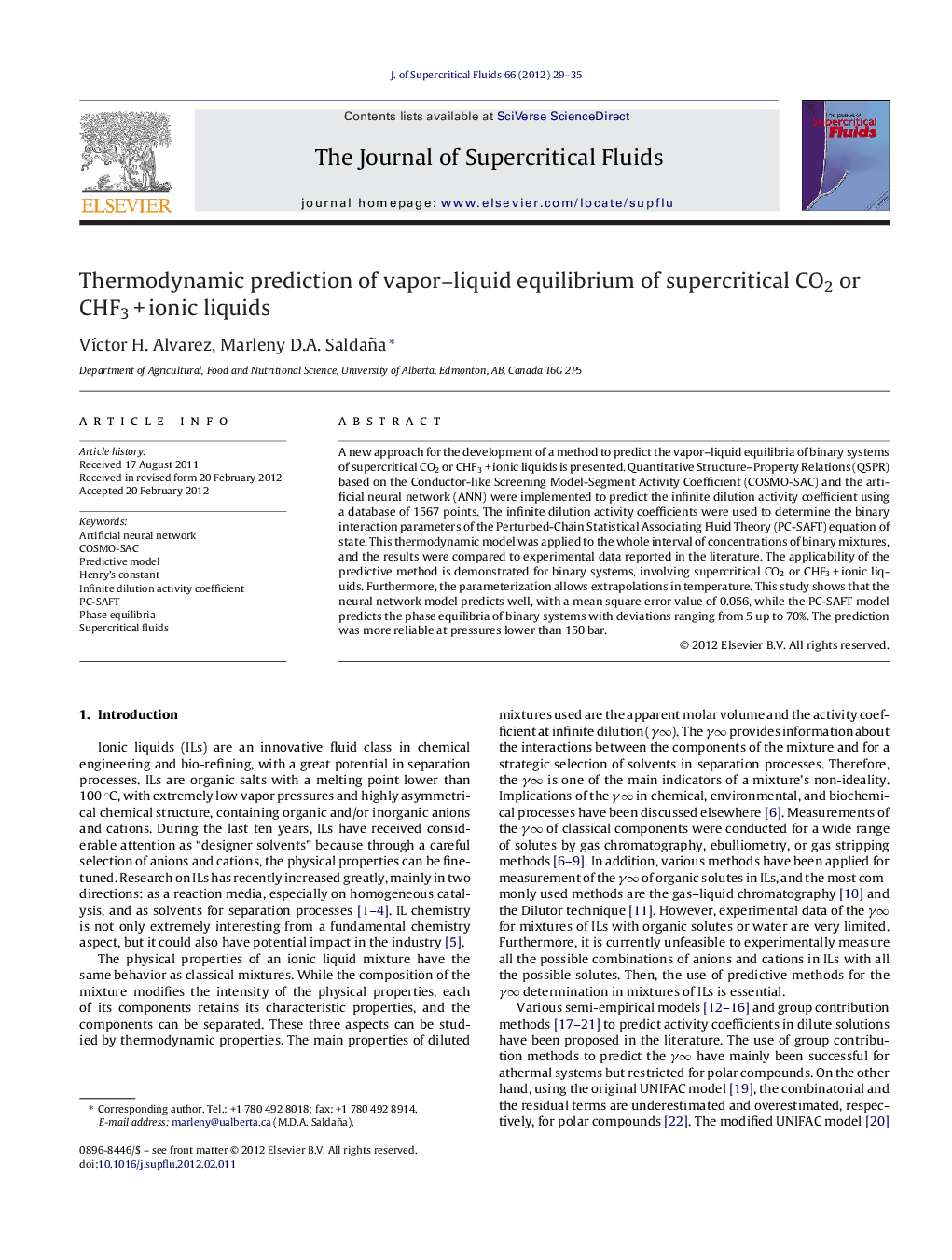| Article ID | Journal | Published Year | Pages | File Type |
|---|---|---|---|---|
| 231095 | The Journal of Supercritical Fluids | 2012 | 7 Pages |
A new approach for the development of a method to predict the vapor–liquid equilibria of binary systems of supercritical CO2 or CHF3 + ionic liquids is presented. Quantitative Structure–Property Relations (QSPR) based on the Conductor-like Screening Model-Segment Activity Coefficient (COSMO-SAC) and the artificial neural network (ANN) were implemented to predict the infinite dilution activity coefficient using a database of 1567 points. The infinite dilution activity coefficients were used to determine the binary interaction parameters of the Perturbed-Chain Statistical Associating Fluid Theory (PC-SAFT) equation of state. This thermodynamic model was applied to the whole interval of concentrations of binary mixtures, and the results were compared to experimental data reported in the literature. The applicability of the predictive method is demonstrated for binary systems, involving supercritical CO2 or CHF3 + ionic liquids. Furthermore, the parameterization allows extrapolations in temperature. This study shows that the neural network model predicts well, with a mean square error value of 0.056, while the PC-SAFT model predicts the phase equilibria of binary systems with deviations ranging from 5 up to 70%. The prediction was more reliable at pressures lower than 150 bar.
Graphical abstractFigure optionsDownload full-size imageDownload as PowerPoint slideHighlights► Phase behavior for binary systems of supercritical CO2 or CHF3 + ionic liquids was predicted using the PC-SAFT model. ► A predictive methodology was developed for the first time for supercritical fluids + ionic liquids. ► The thermodynamic model predicted successfully the V–L equilibrium up to 150 bar for the binary systems studied.
